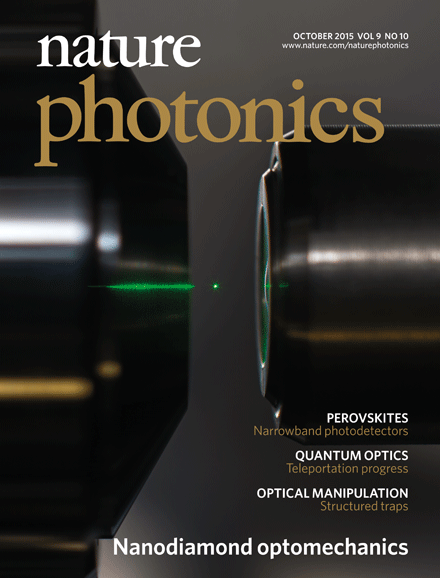Research Experience [CV] [Google Scholar profile]
Current research link
The Quantum Optoelectronics and Optical Metrology Group at the University of Rochester specializes in developing and experimenting with solid state quantum optics devices, including self-assembled quantum dots, photonic crystal nanocavities, semiconductor defect centers, and novel semiconducting materials.
 My research represents an extension of these experiments into the flourishing field of optomechanics. In collaboration with researchers from
ETH Zürich
and ICFO (Barcelona), we have developed a free-space
optical dipole trap capable of stably levitating nanoscale dielectric particles (~100 nm) in vacuum.
My research represents an extension of these experiments into the flourishing field of optomechanics. In collaboration with researchers from
ETH Zürich
and ICFO (Barcelona), we have developed a free-space
optical dipole trap capable of stably levitating nanoscale dielectric particles (~100 nm) in vacuum.
My trapping apparatus consists of a low noise continuous-wave Nd:YAG laser which is focused to a diffraction limited focal spot by a high numerical aperture microscope objective inside a vacuum chamber. This single beam provides a three-dimensional confining potential. We generate time-varying optomechnical forces by modulating the power of the trapping laser, and thus the depth of the optical potential well. This technique can be used to parametrically excite the center of mass motion, or a damp it through nonlinear feedback. The image shows a nanodiamond levitated by a 1064 nm beam, and illuminated by a 532 nm beam.
Publications:- Rodenburg et al., Quantum Theory of Cavityless Feedback Cooling of An Optically Trapped Nanoparticle, submitted, arXiv:1503.05233
- Neukirch et al., Multi-dimensional single-spin nano-optomechanics with a levitated nanodiamond, Nature Phot. 9, 653-657 (2015). link Press: Phys.org Physics World Science Daily Gizmodo IFLScience
- Neukirch and Vamivakas, Nano-optomechanics with optically levitated nanoparticles, Contemp. Phys. 56, 48-62 (2015). link
- Neukirch et al., Observation of nitrogen vacancy photoluminescence from and optically levitated nanodiamond, Opt. Lett. 38, 2976-2979 (2013). link
Past research
I have been involved in professional research since my sophomore year at the University of Nebraska. Groups and projects I have been a part of include:
The Paleomagnetic Research Group (U. of Rochester) link
In the group of Prof. John Tarduno, I studied the recent history of the Earth's magnetic field as recorded in archeological artifacts recovered from southern Africa. Specifically, we hoped to gain insight into the history and formation of the South Atlantic Anomaly (a pronounced region of weak field intensity over southern Africa and the South Atlantic Ocean). This work involved a number of international field trips, and collaborations with members of the South African archaeologic and geologic communities.
I was also involved in the early stages of a partnership with Twinleaf, LLC, which is seeking to develop an atomic vapor magnetometer specifically tailored to studies of paleomagnetic samples.
Publications:- Neukirch et al., An archeomagnetic analysis of burnt grain bin floors from ca. 1200 to 1250 AD Iron-Age South Africa, Phys. Earth Plan. Int. 190–191, 71–79 (2012). link
- Tarduno et al, Geodynamo, solar wind, and magnetopause 3.4 to 3.45 billion years ago, Science 327, 1238-1240 (2010). link
The Polarized Electron Group (U. of Nebraska + Los Alamos National Lab) link
I spent my junior and senior undergraduate years working in the atomic physics lab of Prof. Tim Gay. As part of his group I was introduced vacuum system design, the generation and use of charged particle beams, and the use of lasers in atomic physics experiments. The latter was reinforced by a 10 week stint at Los Alamos National Laboratory, where I learned how to optically control the spin states of rubidium atoms under the supervision of staff scientist Dr. Dale Tupa.
My primary project with the group was the develoment of an apparatus that produced a beam of spin polarized electrons, by means of spin-echange collisions between an initially unpolarized e- beam, and an optically-pumped spin-polarized rubidium vapor target. This required the design and construction of a vacuum apparatus which supported high-vacuum regions (~10-5 torr) for the e- source and output beams, while maintaining a low-vacuum N2 + Rb target region (~10 torr). Implicit in the design was line-of sight access for the optical pumping, and polarization state probing, laser beams to the vapor target.
The Cosmic Ray Observatory Project (U. of Nebraska) link
C.R.O.P. was my first foray into a university research setting. I credit project leaders Profs. Dan Claes and Greg Snow with introducing me to academic research, and helping me acquire a number of technical skills, which I have continued to build on over the course of my career.
